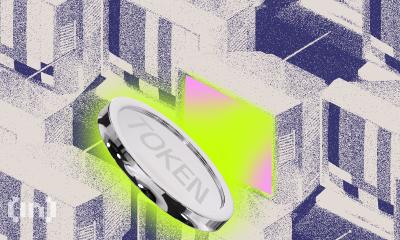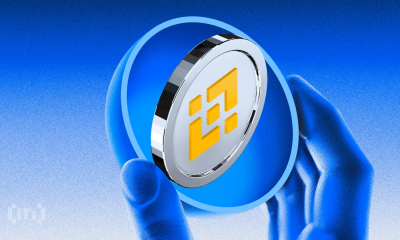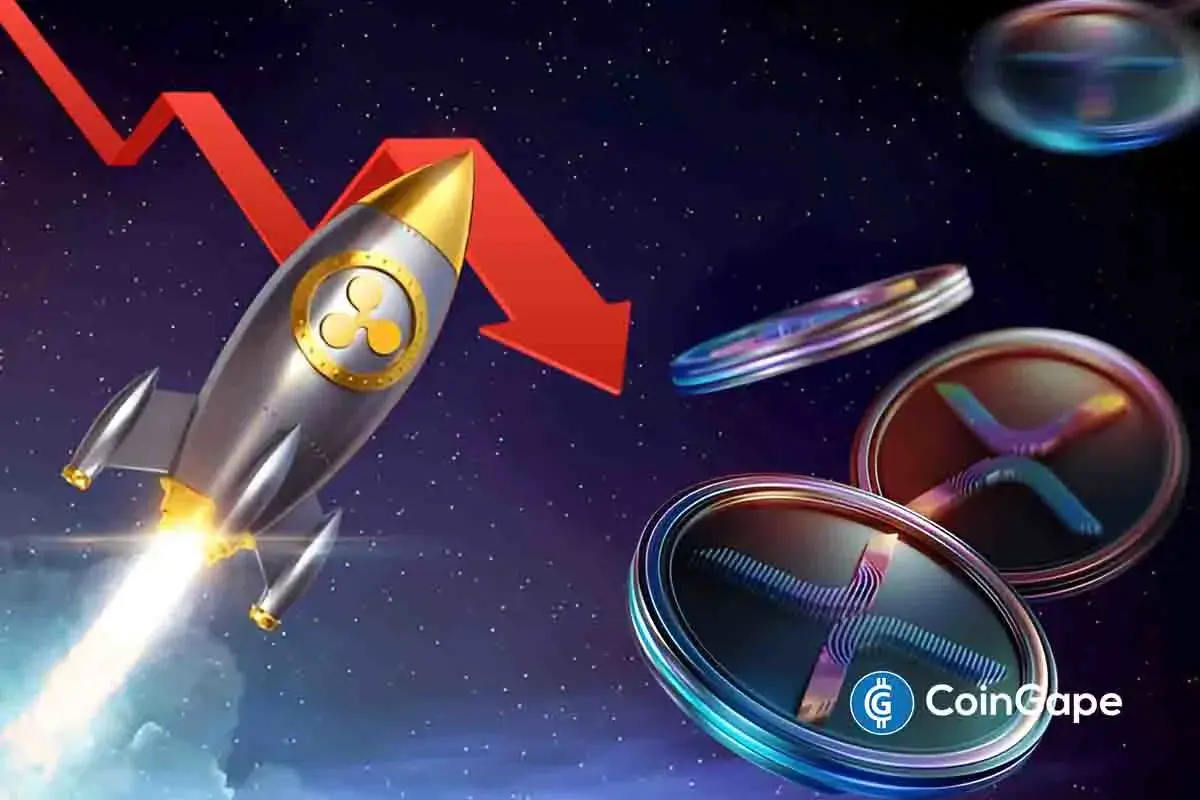Market
Is Trump Tanking the Market on Purpose? Experts Weigh In
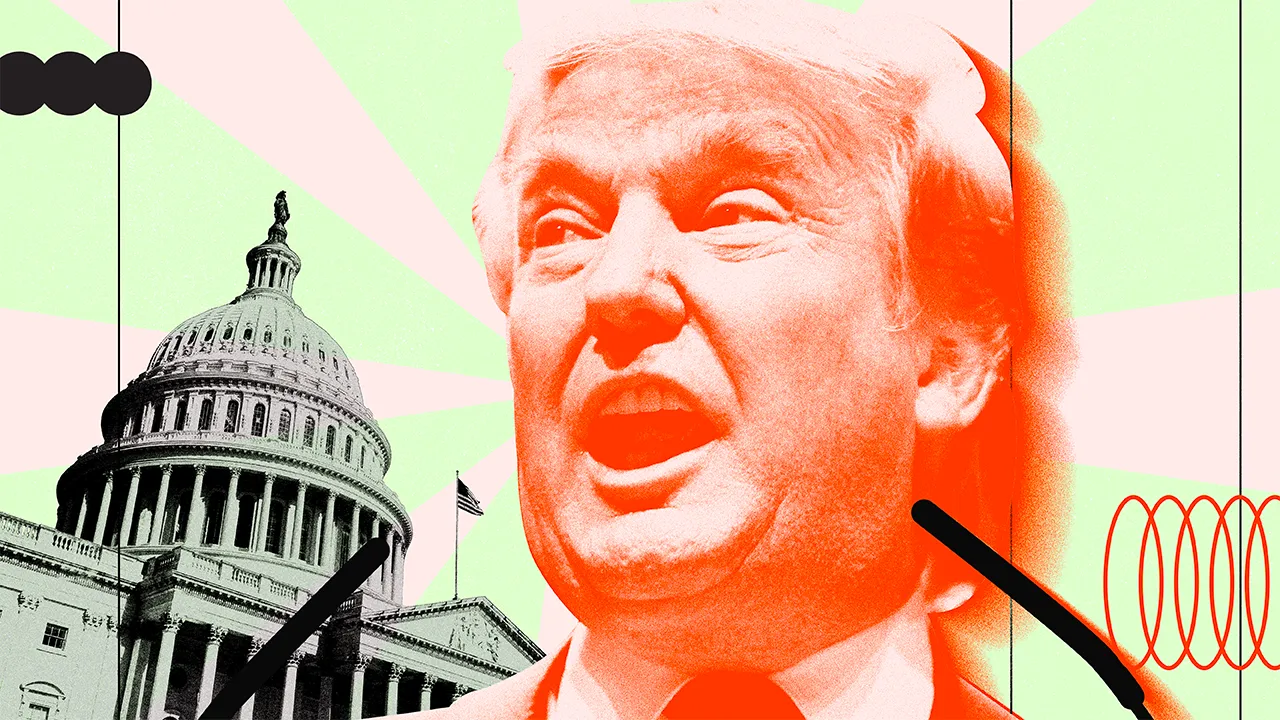
Trump’s economic policies have created much uncertainty in the past few months, stunting stock markets and rocking investor confidence. However, as the United States faces a significant debt maturity of $7 trillion and high yields, theorists wonder whether Trump’s tariffs can get the Federal Reserve to bring interest rates down.
BeInCrypto spoke with Erwin Voloder, Head of Policy of the European Blockchain Association, and Vincent Liu, Chief Investment Officer at Kronos Research, to understand why Trump might be using tariff threats to boost American consumers’ purchasing power. They warn, however, that the risks far outweigh the benefits.
The US Debt Dilemma
The United States currently has a national debt of $36.2 trillion, the highest of any country in the world. This figure reflects the total sum of funds the federal government has acquired through borrowing to finance past expenditures.
In other words, the US owes foreign and domestic investors a lot of money. It will also have to repay certain loans in the next few months.
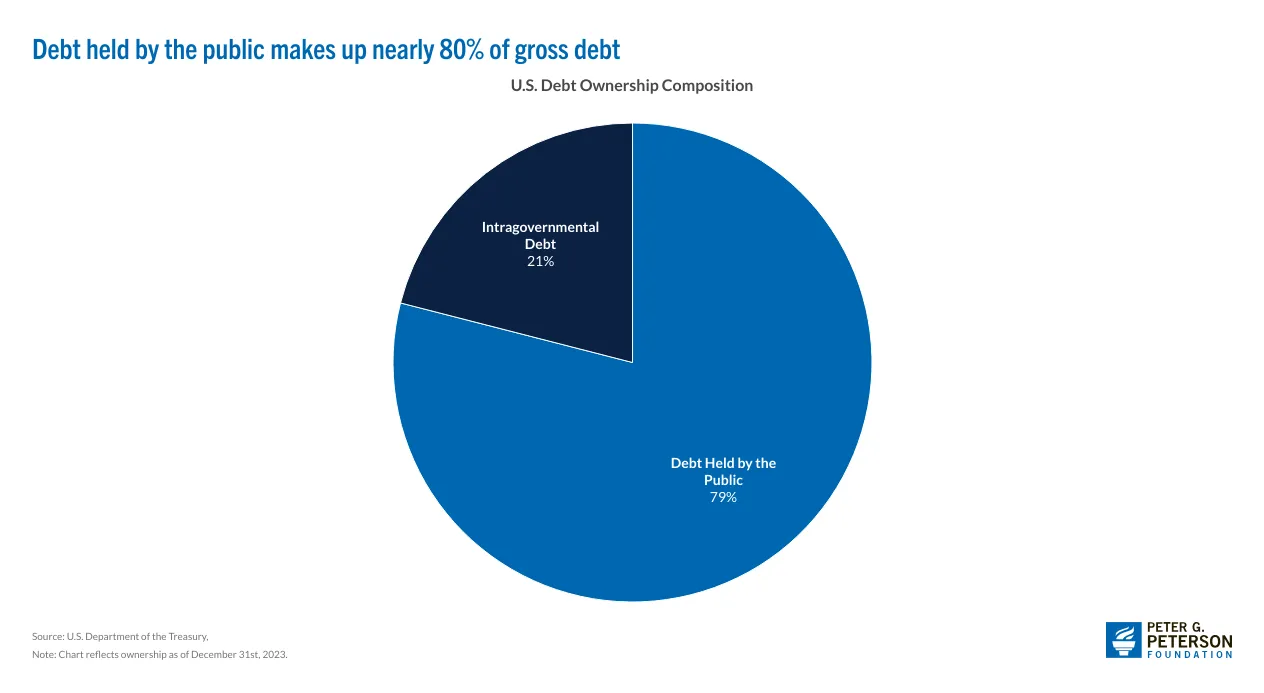
When the government borrows money, it issues debt securities, like Treasury bills, notes, and bonds. These securities have a specific maturity date. Before this deadline, the government must pay back the original amount borrowed. In the next six months, the United States will have to pay back around $7 trillion in debt.
The government has two options: It can either use available funds to repay the maturity debt or refinance it. If the federal government opts for the latter, it must take out further loans to repay the current debt, increasing the already ballooning national debt.
Since the US has a history of opting for the refinancing option, direct repayment seems unlikely. However, steep interest rates currently complicate refinancing.
High Interest Rates: An Obstacle to Debt Refinancing
Refinancing allows the government to roll over the debt, meaning it doesn’t need to find the money from available funds to pay off the old debt immediately. Instead, it can issue new debt to cover the old one.
However, the Federal Reserve’s interest rate decisions significantly impact the federal government’s ability to refinance its debt.
This week, the Federal Reserve announced that it will keep interest rates between 4.25% and 4.50%. The Reserve has steadily increased percentages past the 4% benchmark since 2022 to control inflation.
While this is good news for investors who expect higher yield returns on their bonds, it’s a bad outlook for the federal government. If it issues new debt to cover the old one, it would have to pay more in interest, which will strain the federal budget.
“In practical terms, even a 1% higher interest rate on $7 trillion equates to $70 billion more in interest expense per year. A 2% difference would be $140 billion extra annually– real money that could otherwise fund programs or reduce deficits,” Voloder told BeInCrypto, adding that “the US already has a national debt exceeding $36 trillion. Higher refinancing rates compound the debt problem, as more tax revenue must go just to pay interest, creating a vicious cycle of larger deficits and debt.”
This scenario indicates that the United States needs to proceed cautiously with its monetary policies. With looming debt repayment deadlines and concerns over inflation, the government should embrace stability over uncertainty.
However, the Trump administration seems to be doing the opposite by threatening its neighbors with steep tariffs. The main question is: Why?
Trump’s Tariff Policies: A Strategy or a Gamble?
During Trump’s first and second terms in office, he has continuously toyed with a tariff policy targeting his neighbors Canada and Mexico and his longtime rival China.
In his most recent inaugural address, Trump reaffirmed his commitment to this trade policy, claiming it would bring money back into the United States.
“I will immediately begin the overhaul of our trade system to protect American workers and families. Instead of taxing our citizens to enrich other countries, we will tariff and tax foreign countries to enrich our citizens. For this purpose, we are establishing the External Revenue Service to collect all tariffs, duties, and revenues. It will be massive amounts of money pouring into our Treasury, coming from foreign sources,” Trump said.
However, the ensuing uncertainty about trade relationships and consequent retaliatory actions from affected countries have inevitably created instability, causing investors to react sharply to the news.
Earlier this month, markets experienced a widespread selloff, driven by anxieties surrounding Trump’s tariff policies. These resulted in a sharp decline in US stocks, a drop in Bitcoin’s value, and a surge in Wall Street’s fear index to its highest point of the year.
A similar scenario also played out during Trump’s first presidency.
“Intentionally rising economic uncertainty via tariffs carries steep risks: markets could overreact, plunging and increasing percentages for a possible recession, as seen in 2018’s trade war drop,” Liu said.

Whenever traditional financial markets are affected, crypto also suffers by association.
“In the immediate term, Trump’s production-first, America-First economics means digital asset markets must grapple with higher volatility and less predictable policy inputs. Crypto is not isolated from macro trends and is trading increasingly in tandem with tech stocks and risk conditions,” Voloder said.
While some view Trump’s measures as careless and erratic, others see them as calculated. Some analysts have viewed these policies as a means to get the Federal Reserve to lower interest rates.
Is Trump Using Tariffs to Influence the Federal Reserve?
In a recent video, Anthony Pompliano, CEO of Professional Capital Management, argued that Trump was trying to lower Treasury yields by intentionally creating economic uncertainty.
Tariffs can disrupt trade relationships by acting as taxes on imported goods, consequently increasing the cost of goods for consumers and businesses. Given that these policies are often a great source of economic uncertainty, they can create a sense of instability in the economy.
As evidenced by the market’s strong reaction to Trump’s tariff announcements, investors were spooked out of fear of an economic slowdown or looming recession. Consequently, businesses might reduce risky investments while consumers limit spending to prepare for price spikes.
Investor habits may also change. With less confidence in a volatile stock market, investors may shift from stocks to bonds to seek safe-haven assets. US Treasury bonds are considered one of the safest investments in the world. In turn, this flight to safety increases their demand.
When demand for bonds increases, bond prices go up. This series of events indicates that investors are bracing themselves for prolonged economic uncertainty. In response, the Federal Reserve may be more inclined to lower interest rates.
Trump achieved this during his first presidency.
“The theory that tariffs could lift bond demand hinges on fear sparking market shifts. Tariff uncertainty might trigger equity sell-offs, boosting Treasuries and lowering yields to ease $7 trillion in US debt refinancing evidenced by 2018, when trade shocks cut yields from 3.2% to 2.7%. Yet, with inflation at 3-4% and yields at 4.8%, success is not guaranteed. This will require tariffs to be credible enough to adjust markets without stoking inflation,” Liu told BeInCrypto.
If the Reserve lowers interest rates, Trump can acquire new debt at a lower price to pay off the impending debt maturity.
The plan may also benefit the average American consumer– to an extent.
Potential Benefits
Treasury yields are a benchmark for many other interest rates in the economy. Therefore, if Trump’s trade policies get Treasury yields to fall, this could have a trickle effect. The Federal Reserve could lower interest rates on other loans, such as mortgages, car loans, and student loans.
In turn, borrowing rates would drop, and disposable income would increase. Thus, the average American citizen can contribute to overall economic growth with greater purchasing power.
“For an American family, a drop in mortgage rates can mean substantial savings on monthly payments for a new home or refinance. Businesses might find it easier to finance expansions or hire new workers if they can borrow at 3% instead of 6%. In theory, greater access to low-interest loans could stimulate economic activity on Main Street, aligning with Trump’s goal of revving growth,” Voloder explained.
However, the theory relies on investors reacting very specifically, which is not guaranteed.
“It’s a high-stakes bet with a narrow margin for error for success depending on many different economic factors,” Liu said.
In the end, the risks heavily outweigh the potential benefits. In fact, consequences can be grave.
Inflation and Market Instability
The theory of deliberately causing market uncertainty hinges on the fact that the Federal Reserve would bring down interest rates. However, the Reserve is intentionally keeping interest rates high to contain inflation. A tariff war threatens to spur inflation.
“Yields could hit 5% if inflation spikes, not drop, and [Jerome] Powell’s high odds of holding rates steadily undermine the plan,” Liu said.
To that point, Voloder added:
“If the plan backfires and yields don’t fall enough, the US might end up refinancing at high rates anyway and with a weaker economy, which would be the worst outcome.”
Meanwhile, since tariffs directly increase the cost of imported goods, this cost is often passed on to consumers. This scenario creates higher prices for a wide range of products and causes inflationary pressures, eroding purchasing power and destabilizing the economy.
“Inflation stemming from tariffs means each dollar earned buys less. This stealth tax hurts lower-income families the most, as they spend a higher fraction of their income on affected essentials,” Voloder said.
In this context, the Reserve would likely hike Treasury yields. The scenario could also gravely affect the health of the United States’ job market economy.
Impact on Jobs and Consumer Confidence
The economic uncertainty of tariffs can deter businesses from continuing to invest in the United States. In this context, companies may delay or cancel expansion plans, reduce hiring, and cut back on research and development projects.
“The impact on jobs is a major concern. Intentionally cooling the economy to force rate cuts is essentially flirting with higher unemployment. If markets drop and business confidence wanes, companies often respond by cutting back on hiring or even laying off workers,” Voloder said.
Rising prices and market volatility could also damage consumer confidence. This dynamic would reduce consumer spending, which is a major driver of overall economic growth.
“Americans face higher prices and eroded purchasing power as a direct result of tariffs and uncertainty. Tariffs on everyday goods –from groceries to electronics– act like a sales tax that consumers ultimately pay. These costs hit consumers at a time when wage growth may stall if the economy slows. So, any extra cash saved from lower interest payments could be offset by rising prices for consumer goods and possibly higher taxes down the road,” Voloder told BeInCrypto.
The consequences are not just limited to the United States, however. As with any trade dispute, countries will feel inclined to respond– and recent weeks have proven that they already have.
Trade Wars and Diplomatic Tensions
Both countries responded sharply when Trump imposed 25% tariffs on products entering the US from Canada and Mexico.
Canadian Prime Minister Justin Trudeau called the trade policy a “very dumb thing to do.” He then announced retaliatory tariffs on American exports and gave notice that a trade war would have consequences for both countries. Mexico’s President Claudia Sheinbaum did the same.
In response to Trump’s 20% tariff on Chinese imports, Beijing imposed retaliatory tariffs of up to 15% on various significant US agricultural products, including beef, chicken, pork, and soybeans.
Additionally, ten American companies now face restrictions in China after being placed on the country’s ‘reliable entity list.’ This list prevents them from engaging in import/export trade with China and limits their ability to make new investments there.
The Chinese Embassy in the United States also said that it wasn’t scared by intimidation.
Tariffs will also have consequences beyond harming international relations.
Global Supply Chain Disruptions
International trade wars could disrupt global supply chains and harm export-oriented businesses.
“From a macro perspective there is also the fear of trade war escalation globally which could have the boomerang effect of denting US exports and manufacturing, meaning US farmers losing export markets or factories facing costlier inputs. This global tit-for-tat could amplify the downturn and also strain diplomatic relations. Additionally, if international investors see US policy as chaotic, they might reduce investment in the US over the longer term,” Voloder told BeinCrypto.
Inflationary pressures and economic downturns could also push individuals to embrace digital assets.
“Additionally, if the US pursues mercantilist policies that alienate foreign creditors or weaken confidence in the dollar’s stability, some investors might increase allocations to alternative stores of value like gold or Bitcoin as a hedge against currency or debt crises,” Voloder explained.
Consumers might experience shortages of essential goods, while businesses would see increased production costs. Those that rely on imported materials and components would be particularly affected.
A High-Risk Strategy: Is it Worth it?
The theory that tariffs could lower yields by creating uncertainty is a highly risky and potentially damaging strategy. The negative effects of tariffs, such as inflation, trade wars, and economic uncertainty, far outweigh potential short-term benefits.
As products become more expensive and businesses reduce their workforce to equilibrate their balance sheets, the average American consumer will experience the brunt of the consequences.
Disclaimer
Following the Trust Project guidelines, this feature article presents opinions and perspectives from industry experts or individuals. BeInCrypto is dedicated to transparent reporting, but the views expressed in this article do not necessarily reflect those of BeInCrypto or its staff. Readers should verify information independently and consult with a professional before making decisions based on this content. Please note that our Terms and Conditions, Privacy Policy, and Disclaimers have been updated.
Market
XRP Early Investors Continue To Sell As Price Holds Above $2
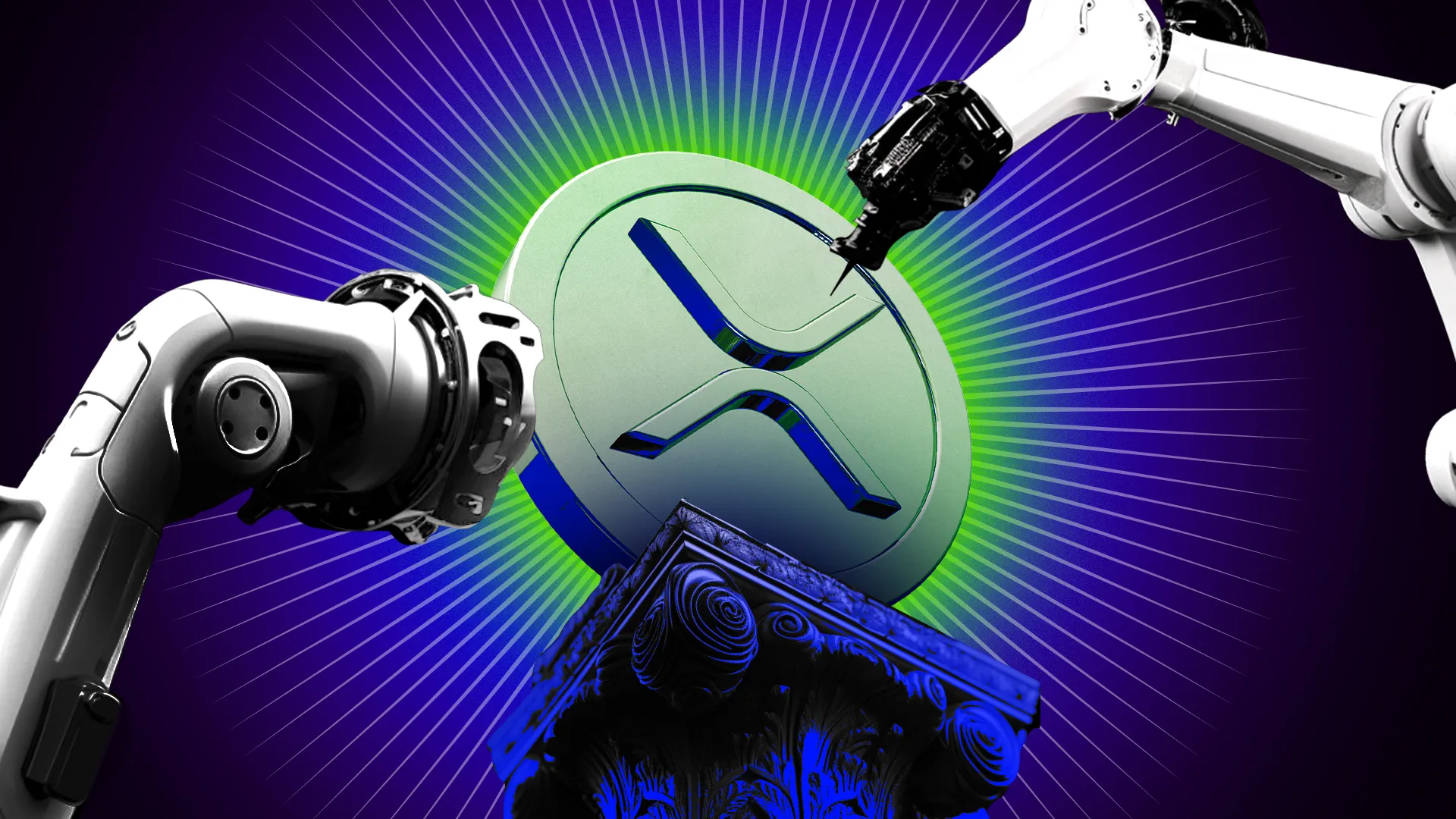
XRP has struggled to secure growth in recent days, with the altcoin failing to maintain key support levels. Despite an attempted price rally, XRP has been unable to break through the $2.32 level, leaving the price hovering just above $2.00.
Those who bought during XRP’s three-week bull run are now facing losses after the failed breach of crucial barriers.
XRP Holders Are Facing Challenges
The liquidation map shows that a significant amount of short positions—around $400 million worth—are at risk of liquidation should XRP’s price rise to $2.32. However, even with XRP trading at $2.15, just 8% away from the threshold of $2.32, the potential for liquidations does not appear imminent.
The behavior of XRP’s investors suggests that these liquidations may not take place in the short term. This is because XRP holders are primarily leaning towards selling over HODLing at the moment.
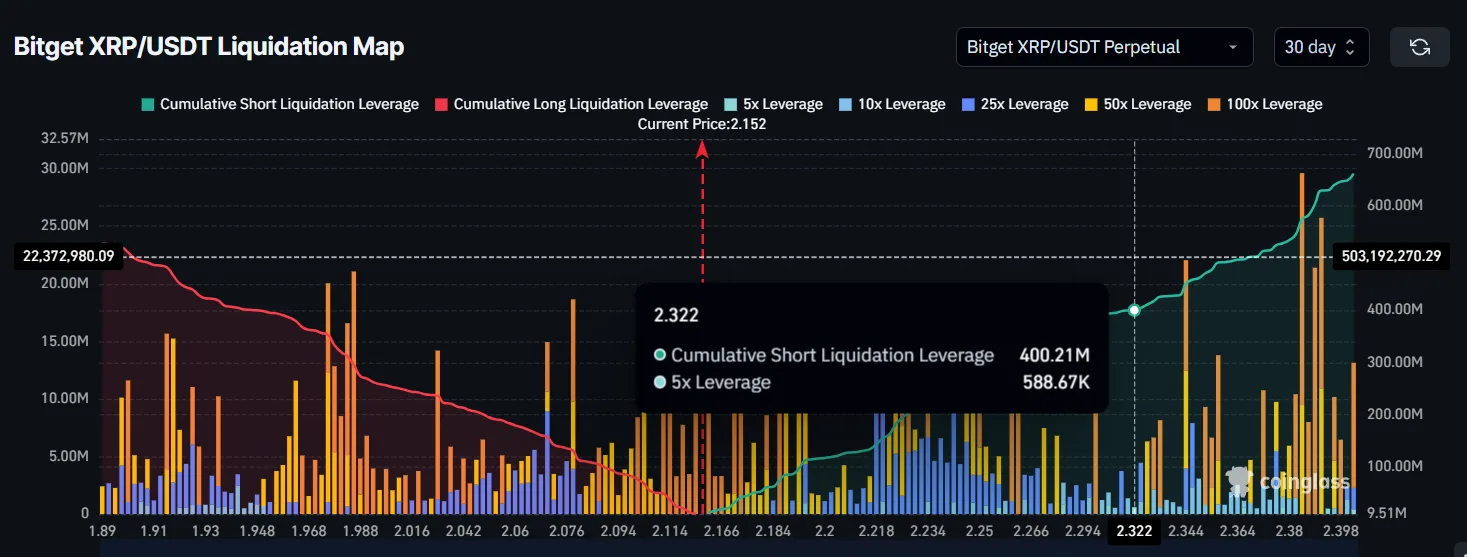
XRP’s overall momentum is showing signs of weakening, as reflected by the Realized Profit/Loss ratio. This indicator suggests that realized profits are declining and may soon turn into losses. The supply being sold likely originated from purchases made during XRP’s November 2024 bull run when the price surged to $2.
XRP formed a new high back in January; however, since then, XRP’s price has dropped back to $2, and many investors who bought at higher levels are now selling to offset losses. This ongoing selling pressure is keeping XRP from experiencing any significant uptick, further dampening bullish sentiment.
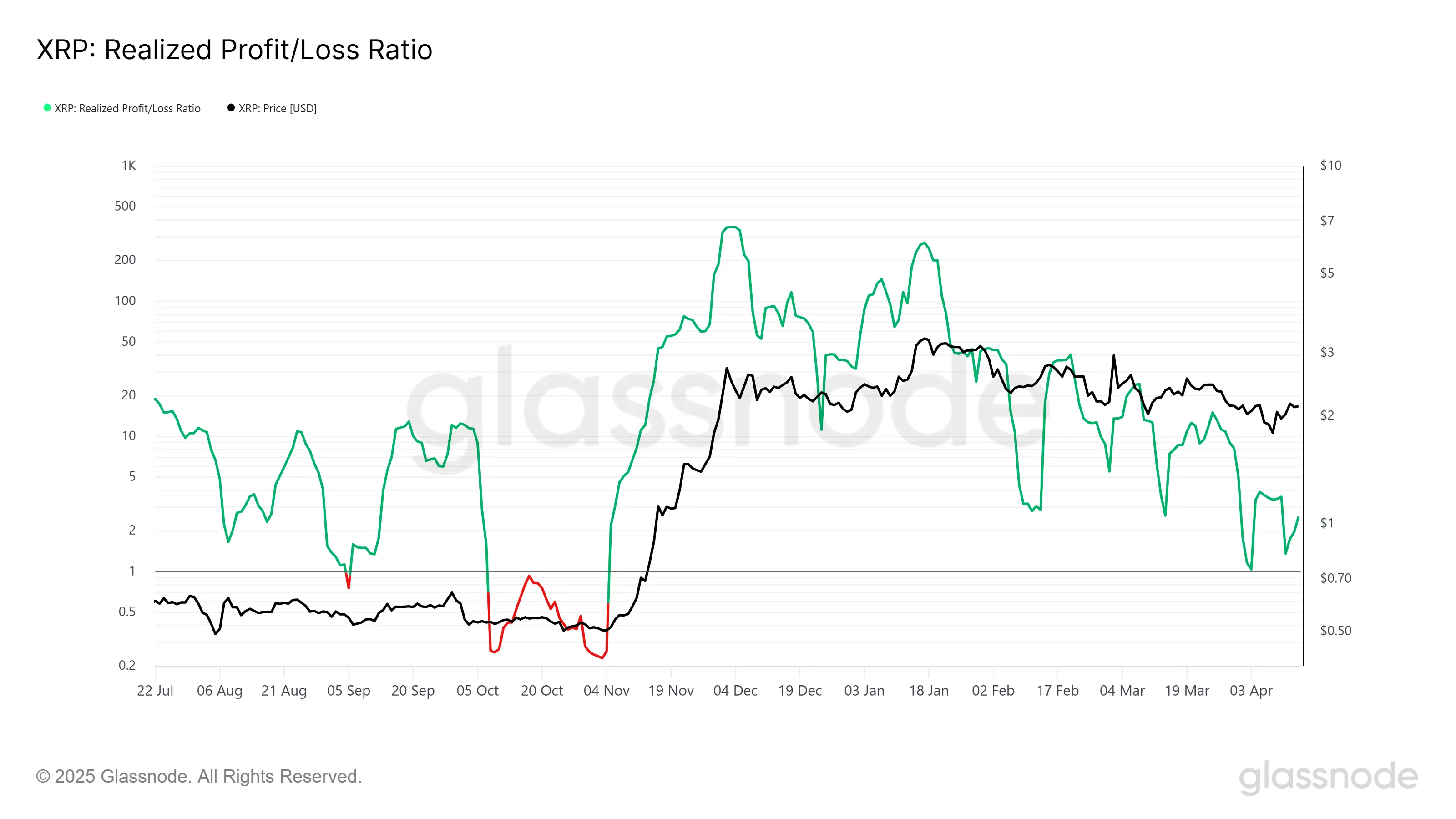
XRP Price Looks To Breakout
XRP is currently trading at $2.15, just below the $2.16 local resistance level, which it failed to secure as support earlier this month. The altcoin is consolidating beneath $2.27, a resistance level that has been a point of contention since the end of March. If the price remains above the $2.00 support, it could stabilize at these levels, preventing further losses for investors.
The chances of continued consolidation seem high, as XRP holds above $2.00. This could keep the market relatively stable as investors wait for further signals to confirm the next move. With a lack of major catalysts, the price may fluctuate within this range.

However, should XRP breach the $2.27 resistance and rise toward $2.40, the earlier-mentioned liquidations could trigger a new wave of buying, potentially driving the price upward. This would provide a more bullish outlook and shift the market sentiment.
Disclaimer
In line with the Trust Project guidelines, this price analysis article is for informational purposes only and should not be considered financial or investment advice. BeInCrypto is committed to accurate, unbiased reporting, but market conditions are subject to change without notice. Always conduct your own research and consult with a professional before making any financial decisions. Please note that our Terms and Conditions, Privacy Policy, and Disclaimers have been updated.
Market
Omri Ross on How eToro Stands Out in the Crypto Exchange Arena


On the opening day of the 2025 edition of the Paris Blockchain Week, BeInCrypto had the opportunity to interview Omri Ross, Chief Blockchain Officer for eToro. He revealed that despite the current market condition, the firm’s upcoming IPO is still in the pipeline.
We discussed how the company positions itself in the crypto exchange market and how it tackles the security question for its users.
Omri Ross Sheds Light on the Positioning of eToro
eToro has been, for many years, a very innovative player in this market. All areas around are following and creating a social network for trading.
There is the idea that people would like to copy-trade each other and be happy to share information about their portfolios. I think the way, for example, that our popular investors are working together with the community is absolutely fascinating.
I remember, for example, my discussion at some of our client events; we see a lot of the investors are actually being in contact with people who follow them. There is much less distance. There is much more discussion about why they follow specific portfolios.
And eToro also helps with this element. eToro actually creates events where popular investors and customers meet each other. As a platform, we also have an educational element with the eToro Academy. We also do some podcasts together with them. I think this is really innovative and awesome.
In terms of products, you know, our CEO has always been very pro-crypto. We have had Bitcoin trading available at eToro since 2013, so it is fairly early. And for me, it’s always been a pleasure to be in a place where you want to kind of push the funds; you want to bring to, in a regulated way, as many products as possible.
You know, customer protection and personal protection, but we are also trying to see how we can expose our customers to new products and innovations. And I think that that’s pretty unique, and we’re very proud of that.
How many Cryptos are Trading on eToro Right now?
We have more than 100 at the moment, with most of the big ones. However, we still don’t have so many stablecoins, but this is because we sort of see ourselves as a financial institution. We are looking into extending it and looking for ways to sort of allow our customers to reach more elements.
We also have an experimental area where you can experiment with more assets that may not necessarily be mature enough to be without the disclaimers. A big element for us is really how to communicate. On the one hand, we offer a lot of opportunities, but we are also trying to have people explore and understand what they investigate and work closely with regulators.
Is Copy Trading the Key Element of eToro?
100%. Also, many customers come to the discussions that appear on eToro to learn and discuss crypto with other people.
We also have smart portfolios where you follow specific trends and make it easier for people to invest. For example, we have a DeFi portfolio and a MetaMask portfolio. It’s also a very simple way for people to get exposed to a bigger sort of industry, which is also very transparent.
Yeah, so I think there is a lot of innovation around that, but it’s really helping retail [investors] get information and be able to easily, even in fiat, sort of invest in all of that.
Which Asset Category Seems to Have the Most Potential for eToro to Expand?
I would touch upon two subjects in this regard. The first element is we are a multi-asset platform.
One of, I think, the biggest advantages of using eToro is your ability to get exposed to many, many different sorts of asset classes in one place. You can also have the eToro money credit card in some countries that we support. We’re also seeing that when our customers use a larger amount of our products, they really benefit from that. So I think that’s a big part of the element.
I would also mention, in that regard, that a lot of our investors are somehow maybe Gen Z. We really see the potential of people to really follow what happens in the market, where they’re really interested in what happens in the market. Social networks are a big part of that.
You can follow others that you are interested in, you can comment on yourself and engage, as well as the fact that the world is a very interesting place, and things are changing daily. And to know that you can do crypto at eToro if that’s interesting, but also they are like, if they’re interested in oil and gas prices, or any other things, you have that as well. I think this is what is really special, that you can get exposed to a lot of stuff, learn about it, and all in one place.
Is Education the main Drive of how eToro Recruits new Customers?
Not necessarily. We mostly see that part of our goal as a company is to open financial markets for everybody and invest in a simple and transparent place. And for us, education is part of that.
We want to help our customers educate themselves, and with the hope that they choose to stay with us for many, many years to come. So this is a way for us to create a lot of opportunities.
We want to build a longer-term relationship and help customers prosper. Yeah, how we recruit different people really depends. Part of it is related to marketing, brand awareness, and many other aspects.
How eToro Focuses on the Security of the Platform
First, we work with top-net security experts, including ex-secret service people. Some of them are employed by eToro to deal with that element.
Secondly, especially around crypto, I can’t expose too much information because some of it is really classified. However, we work on different layers of security within a customer infrastructure. We try to keep a lot of client assets in what we describe as a “deep vault” with very secure elements. And it’s a big part of our infrastructure. It’s a big part of our discussion.
For any project, we take the fact that customers trust us extremely seriously with the funds. And we feel extremely fortunate for it.
Luckily for us, until today, we never had any issue with that. But there are a lot of elements around it. When you ask about innovation, it’s also one of the reasons why it may take a little bit longer for us to issue new projects; it is also because we take security extremely seriously with every element. That is a major part of the design.
Does eToro Use B2B Solutions For Security?
We think there are good B2B solutions. Again, when we work with vendors, also based on our size, they usually adapt to our requirements.
We work with some vendors who are from a security background, working in secret services, and building really insane secure elements. I learned a lot working with them and with their background. I wish I could tell you more about it, but for me, as an individual and not as a potential sort of employee, I think that it’s very interesting.
Because there are also discussions about the “not your keys, not your money” element. But also, having your own money has its risks. Holding a really large amount of money in some place at home can get ruined or stolen. There are so many risks; you can also have the risk of someone putting a gun to your head.
There are many social elements. And when I see the work that is done in the program, I’m very proud and impressed by the seriousness we take about that element. I think that’s part of the value we bring in. You know, being regulated and also really taking the customers’ funds and interests seriously.
What eToro Expects to Achieve During the Paris Blockchain Week?
I’ve been here some years back. And it’s grown so much I’m shocked!
I’ve been here for less than an hour today, and I’m like: “Wow!”. And you can really see the adoption here. Also, the French regulation is getting more into that, which is absolutely amazing.
And being at the Louvre, what else can you ask for? But I would also love to talk to a lot of companies to learn about innovation. Part of my role is building new products at eToro within crypto. But it’s also about talking to a lot of founders and crypto providers and seeing what else we can collaborate on and integrate with eToro. And always learn.
I’m very passionate about this specific market and blockchain. So I’m really looking forward to it. I may also catch up with some old friends that I haven’t seen for a while.
How can one Launch Their Crypto on eToro?
You don’t necessarily have to reach out to anyone. We are obviously following the market very closely.
As I mentioned before, being regulated, we’ve taken our clients’ interests very seriously. Often, our processes may be a bit longer than those of some unregulated blockchain platforms.
First, you’d be invited to talk to me or some of our listing or trading committee members. We’re always excited to hear and learn about your new crypto.
Disclaimer
In compliance with the Trust Project guidelines, this opinion article presents the author’s perspective and may not necessarily reflect the views of BeInCrypto. BeInCrypto remains committed to transparent reporting and upholding the highest standards of journalism. Readers are advised to verify information independently and consult with a professional before making decisions based on this content. Please note that our Terms and Conditions, Privacy Policy, and Disclaimers have been updated.
Market
Pi Network Price Rise To $1 is Now In The Hands Of Bitcoin

Pi Network’s price has shown signs of recovery in recent days, reaching a two-week high after a notable uptrend.
However, despite this progress, the cryptocurrency’s growth appears heavily dependent on external factors, particularly Bitcoin’s price movements. As a result, its future direction remains closely tied to the crypto king’s performance.
Pi Network Could Keep The Uptrend Going
The Moving Average Convergence Divergence (MACD) indicator suggests that while Pi Network’s bullish momentum is beginning to fade, it has not yet reversed course. The indicator remains in positive territory, signaling that there is still potential for continued upward movement. The MACD is far from a bearish crossover, which could suggest that Pi still has room to rise in the short term.
Despite a slight weakening in bullish momentum, the overall outlook for Pi Network remains positive. The current trend still shows that there is enough strength for the altcoin to maintain its uptrend and push higher, particularly if market conditions support its growth.
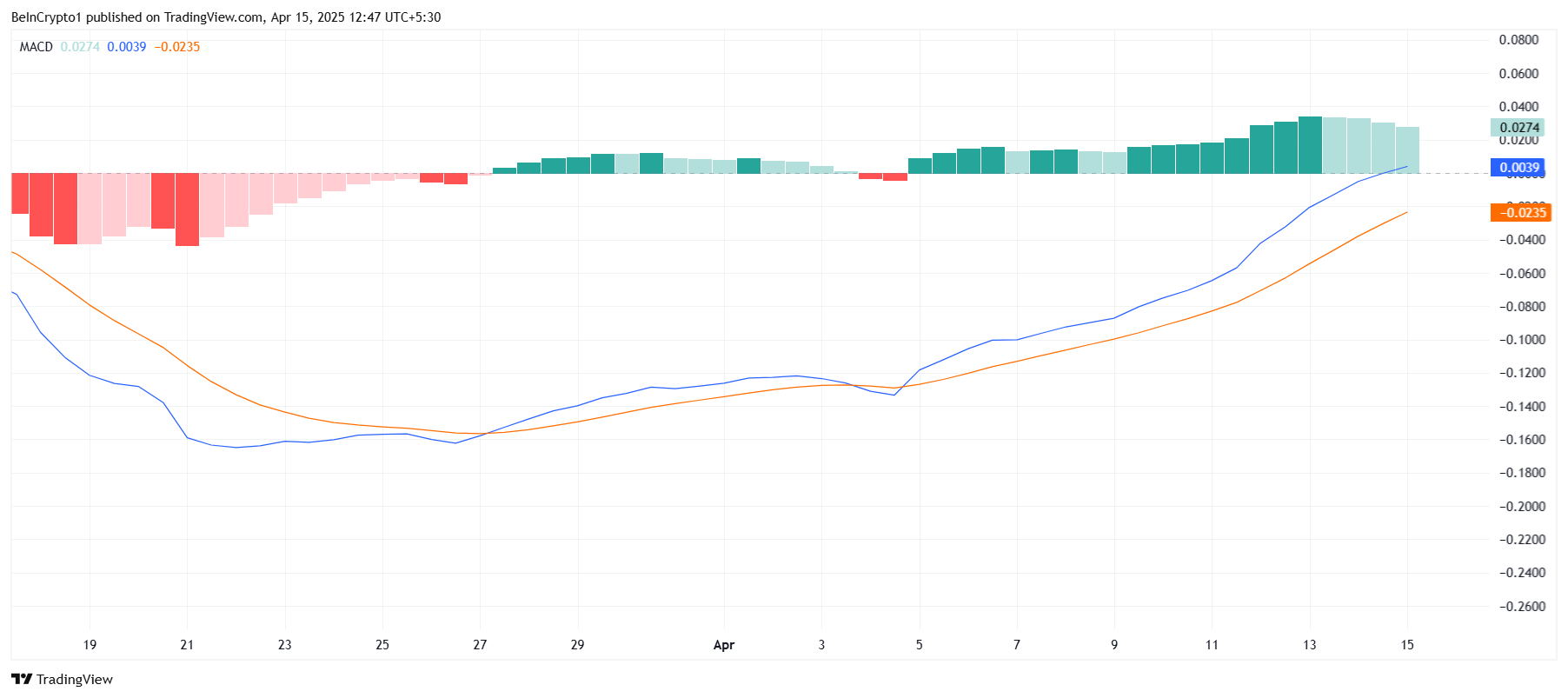
Pi Network has shown a strong correlation with Bitcoin, standing at 0.84. This suggests that Pi closely follows the movements of Bitcoin, with its price trajectory highly influenced by the performance of the crypto market leader. As Bitcoin holds steady above $85,000, it could act as a strong catalyst for Pi’s price growth.
Given Bitcoin’s ongoing strength, Pi Network has the potential to experience a similar upward movement, especially if BTC continues to see positive price action. Pi’s dependence on Bitcoin’s market performance is evident, and any sustained rise in Bitcoin could trigger a corresponding rise in Pi Network’s value.

PI Price is Aiming At $1
Pi Network is currently trading at $0.74, up by 26% over the past five days. To maintain this positive momentum, Pi must hold above the $0.70 support level. A bounce off this level would allow the altcoin to continue its rise and potentially test the next resistance level at $0.87.
If Pi successfully breaches $0.87, it could open the door for further gains, with a potential move toward $1.00. The market sentiment and Bitcoin’s continued strength could fuel this upward momentum, bringing Pi closer to its key target. A break above this resistance would signify the start of a more substantial rally.

However, should Bitcoin experience a decline, Pi Network may follow suit. A drop through the $0.70 support level could lead Pi to test the $0.60 mark, and a further fall through this point would likely bring the price down to $0.51. This would invalidate the bullish outlook and signal a potential reversal in Pi’s price trend.
Disclaimer
In line with the Trust Project guidelines, this price analysis article is for informational purposes only and should not be considered financial or investment advice. BeInCrypto is committed to accurate, unbiased reporting, but market conditions are subject to change without notice. Always conduct your own research and consult with a professional before making any financial decisions. Please note that our Terms and Conditions, Privacy Policy, and Disclaimers have been updated.
-

 Market22 hours ago
Market22 hours agoMENAKI Leads Cat Themed Tokens
-

 Market20 hours ago
Market20 hours ago3 Altcoins to Watch in the Third Week of April 2025
-
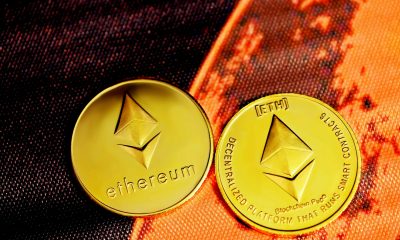
 Ethereum18 hours ago
Ethereum18 hours agoEthereum Price Threatened With Sharp Drop To $1,400, Here’s Why
-

 Market17 hours ago
Market17 hours agoBinance Futures Causes a Brief Crash For Story (IP) and ACT
-
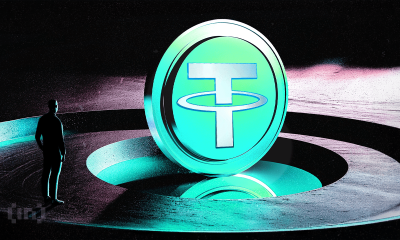
 Market21 hours ago
Market21 hours agoTether Deploys Hashrate in OCEAN Bitcoin Mining Pool
-

 Market19 hours ago
Market19 hours agoCardano (ADA) Eyes Rally as Golden Cross Signals Momentum
-
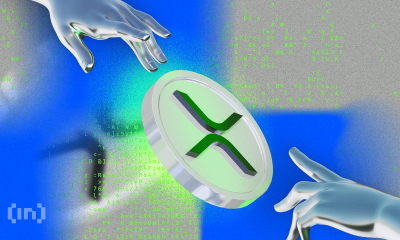
 Market18 hours ago
Market18 hours agoXRP Jumps 22% in 7 Days as Bullish Momentum Builds
-

 Market24 hours ago
Market24 hours agoSEC Delays Decision on Grayscale Ethereum ETF Staking






